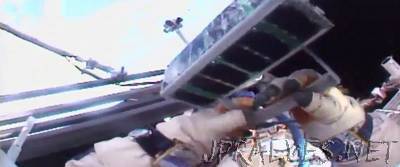
“Spacewalking cosmonauts set free the world’s first satellite made almost entirely with a 3-D printer on Thursday. In total, Russians Fyodor Yurchikhin and Sergey Ryazanskiy ended up releasing five nanosatellites by hand. One by one, the tiny craft — no more than 1 to 2 feet in size — tumbled safely away from the International Space Station. The exterior casing of the first one tossed overboard was made with a 3-D printer. So were the battery packs inside. Researchers want to see how 3-D-made parts weather the space environment. The 3-D satellite contains regular electronics. It also holds greetings to planet Earth in a variety of languages, courtesy of students at Siberia’s Tomsk Polytechnic University, where the satellite was made. The other satellites deployed Thursday have traditional spacecraft parts. Each weighs just 10 to 24 pounds. They’re expected to orbit for five to six months. One commemorates the 60th anniversary of the world’s first satellite, Sputnik 1, launched Oct. 4, 1957, by the Soviet Union. Another pays tribute to Russia’s father of rocketry, Konstantin Tsiolkovsky. He was born 160 years ago next month. The remaining two small satellites involve navigation and other experiments. Yurchikhin and Ryazanskiy completed the satellite releases within an hour of venturing outside. Barely a minute passed between a few of the launches. The rest of the chores took longer than expected, however, and Russia’s Mission Control outside Moscow sent the planned six-hour spacewalk into overtime.”
Link to article
